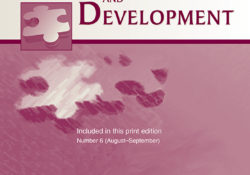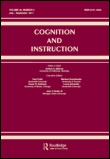tandfonline.com har udgivet en rapport under søgningen “Teacher Education Mathematics”: The Effects of COVID-19 on Young Children’s and Their Parents’ Activities at Home Link til kilde
Like this:
Like Loading...
tandfonline.com har udgivet en rapport under søgningen “Teacher Education Mathematics”: ABSTRACT ABSTRACT This article considers the implementation of Emojis as responses within survey research, measuring attitudes towards mathematics in children aged eight and nine years old. Participants answered two multi-item scales. The first required them to provide an Emoji to provide their responses to statements, whilst the second additionally required them to draw the Emoji they wished to use. The rationale was to allow children to feel more familiar with the common means of communication used in a ‘digital era’ in order to aid reliability and validity of thge measures. Evidence suggests that future research be carried out to measure and assess children’s attitudes with techniques from the current study to help them understand the nature of what is being… Continue Reading →
Like this:
Like Loading...
eric.ed.gov har udgivet: “Children’s Choices,” a project of a joint committee supported by the International Reading Association (IRA) and the Children’s Book Council, is published annually in “The Reading Teacher.” Books recommended by children are grouped by levels: Beginning Reader (ages 5-7); Young Readers (ages 8-10); and Advanced Readers (ages 11-13). Books listed at the Beginning Reader level and Young Reader level of “Children’s Choices” from 1996 through 2006 were analyzed for support of specific curriculum areas. Books related to language arts, math, social studies, and science were categorized and listed according to Louisiana content standards for prekindergarten, kindergarten, first, second, and third grade. The resulting categorized, annotated book list reflects content areas and standards, and each annotation reflects age range as indicated in “Children’s Choices.” Early childhood teachers will… Continue Reading →
Like this:
Like Loading...
eric.ed.gov har udgivet: This brief report focusing on children’ s kindergarten readiness i s the third in a series of reports describing data from the 2009 cohort of the Head Start Family and Child Experiences Survey (FACES 2009). Previous FACES 2009 reports described the characteristics of children and their families and programs as they entered Head Start in fall 2009 ( Hulsey et al. 2011) and, in spring 2010, at the end of one year in the program (Moiduddin et al. 2012). This brief report describes the family backgrounds and developmental outcomes of children as they completed the Head Start program and also describes progress in children’s outcomes between Head Start entry and exit. It focuses on the population of children who entered Head Start for the first time in… Continue Reading →
Like this:
Like Loading...
tandfonline.com har udgivet en rapport under søgningen “Teacher Education Mathematics”: ABSTRACT ABSTRACT Asking questions is an important way of acquiring information and knowledge and plays a significant role in a child’s learning processes. In this study, we examine what characterises the questions asked by children to their teachers in two kindergartens (4–6-year-olds) and six primary school classes (2nd–4th grade) when situated in a natural outdoor environment. Recordings are undertaken by means of action cameras and audio recorders. We also examine the contexts in which the questions are asked. We found that whereas the preschool children’s science topic questions mostly concerned subject matter (74–95%), the schoolchildren more often asked practical questions. Our findings indicate that providing the children with activities that open for the children’s own explorations of a variety of… Continue Reading →
Like this:
Like Loading...
tandfonline.com har udgivet en rapport under søgningen “Teacher Education Mathematics”: Abstract Abstract We examine a hypothesis implied by Steffe’s constructivist model of children’s numerical reasoning: a child’s spontaneous additive strategy may relate to a foundational form of multiplicative reasoning, termed multiplicative double counting (mDC). To this end, we mix quantitative and qualitative analyses of 31 fourth graders’ responses during clinical, task-based interviews. All participants spontaneously used one of three additive strategies—counting-on, doubling, or break-apart-make-ten (BAMT)—to correctly solve an addition word problem (8 + 7). We found between-group differences, with asymmetric association of those ordinal variables. We found counting-on to be mainly related to premultiplicative reasoning and BAMT to mDC reasoning. We discuss the theoretical significance and implications of this corroboration of Steffe’s model. Link til kilde
Like this:
Like Loading...
eric.ed.gov har udgivet: The purpose of the 2012-2013 North Carolina Pre-Kindergarten (NC Pre-K) Evaluation study was to examine the quality of the program and the outcomes for children, along with comparisons to previous years. The primary research questions addressed by this evaluation included: (1) What were the key characteristics of the local NC Pre-K programs?; (2) What was the quality of the NC Pre-K classrooms attended by children and what factors were associated with better quality?; (3) What were the outcomes of children attending the NC Pre-K Program and what factors were associated with better outcomes?; and (4) To what extent have there been any changes over time in these results? To address these questions, information was gathered from multiple sources, including monthly service reports, teacher surveys, observations of classroom… Continue Reading →
Like this:
Like Loading...
eric.ed.gov har udgivet: The purpose of this research was to understand fifth grade children’s cognitive behavior as they wrote, solved and then, in small groups, shared original math story problems. Research questions examined children’s: (1) beliefs about math in this problem-writing classroom, (2) math story problem-writing behavior, (3) difficulties with their self-generated problems, and (4) small-group problem solving behavior. Case studies were conducted in the context of a teaching experiment in one fifth grade classroom. Children were engaged to write, solve and then share math story problems three or four days a week during this one year study. There were three overlapping groups of participant children. Eight children were observed as they wrote and solved math story problems. Seventeen children, including the eight previously observed, were observed via audio-recordings as… Continue Reading →
Like this:
Like Loading...
eric.ed.gov har udgivet: The 2013-2014 North Carolina Pre-Kindergarten (NC Pre-K) Evaluation study was designed to examine the longitudinal outcomes through kindergarten for children who attended the Pre-K program, along with comparisons to previous cohorts of program attendees. A sample of 561 children was included in the study, with data gathered at the beginning and end of NC Pre-K (2012- 2013) and kindergarten (2013-2014) to examine their growth in skills. Researchers conducted individual assessments of children’s language, literacy, math, and general knowledge skills and gathered teacher ratings of behavior skills. For 119 Spanish-speaking dual language learners (DLLs) in the sample, parallel assessments were conducted in both English and Spanish to examine their progress when measured in both languages. In addition, program characteristics and services were examined for the 2013-2014 NC Pre-K… Continue Reading →
Like this:
Like Loading...
tandfonline.com har udgivet en rapport under søgningen “Teacher Education Mathematics”: Abstract Formulae display:?Mathematical formulae have been encoded as MathML and are displayed in this HTML version using MathJax in order to improve their display. Uncheck the box to turn MathJax off. This feature requires Javascript. Click on a formula to zoom. Abstract In this article, we investigate the extent to which housing conditions are associated with school results for children living in Norway. We link individual exam results of students from three national exams in the 5th, 8th and 10th grades for all children living in Norway in the years 2015–2017, to a number of official national datasets including a novel housing register that has information on key housing characteristics for all households in Norway. We also use a newly… Continue Reading →
Like this:
Like Loading...




